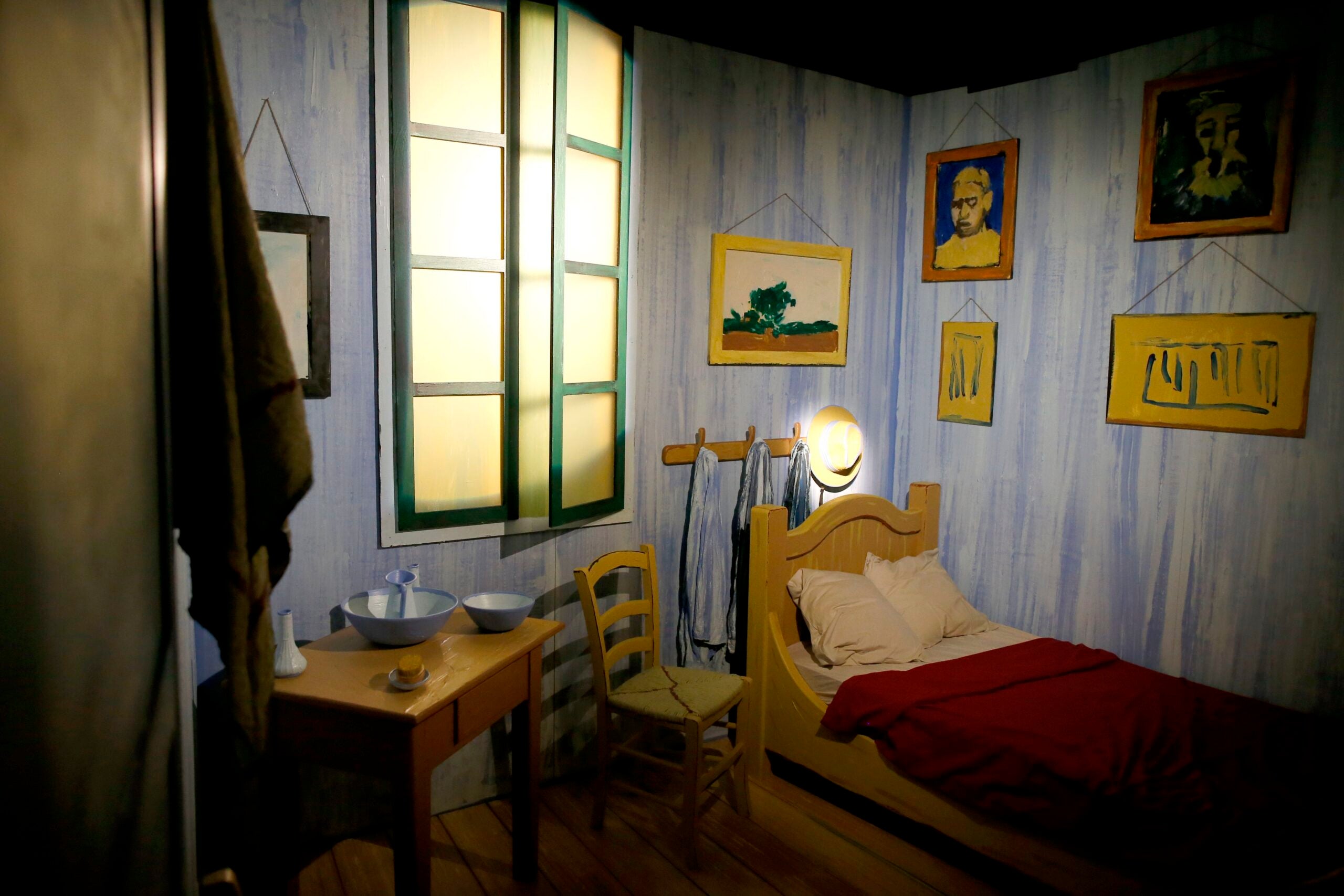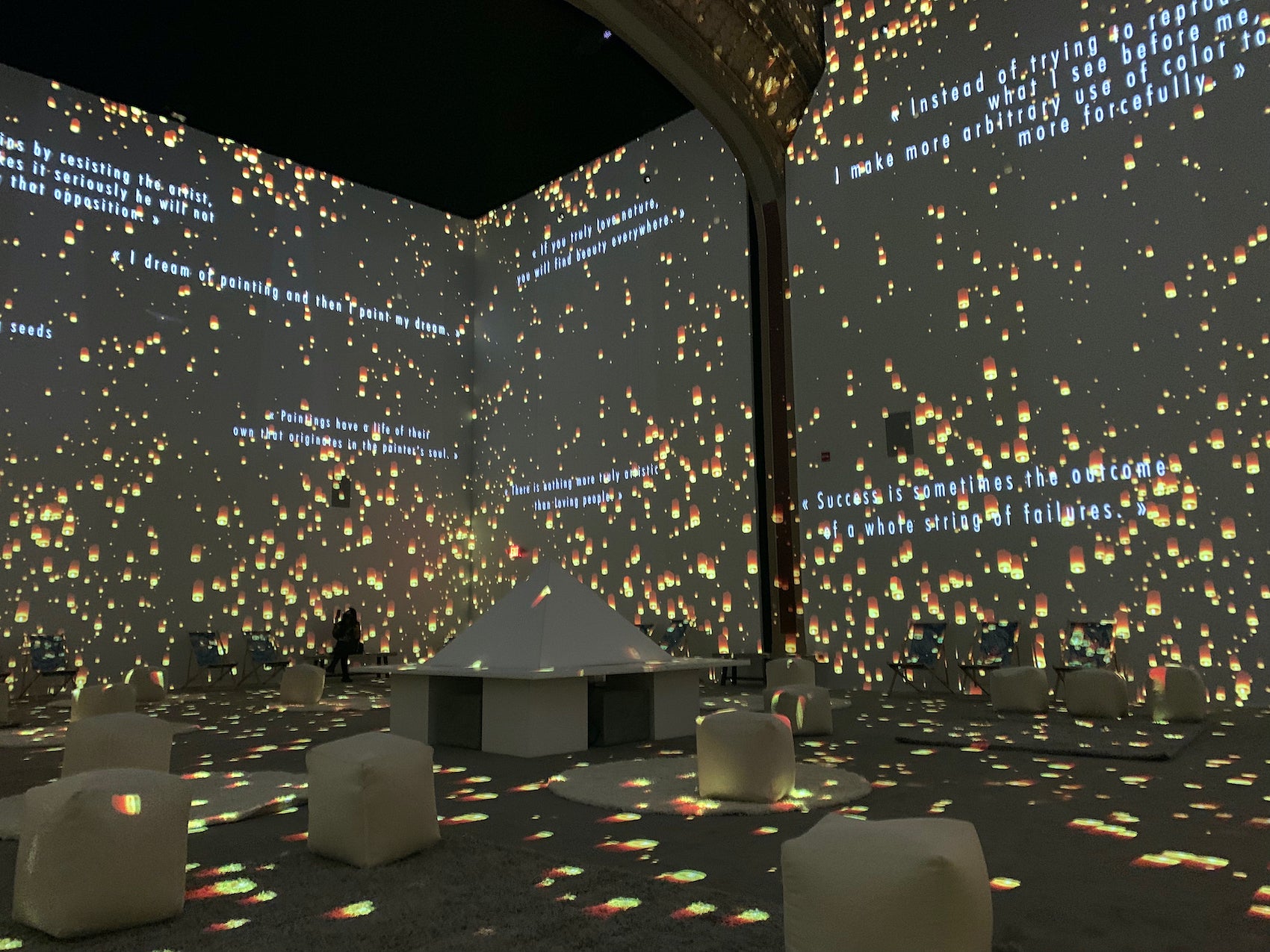Arts
Bostonians would be better off saving their money and skipping the new exhibit at the Strand Theatre.
As I stood waiting for my Uber to Dorchester for the opening of “Van Gogh: The Immersive Experience,” I could see my driver across the street. As he seemingly waited for a break in traffic to cross the intersection, I gave him a friendly wave. Then, without warning, he turned away from my apartment and drove off, with the app informing me that my ride had been cancelled.
Given the seven months that had led to that moment, it was a fitting start to my day. When events company Fever first announced back in March that “Van Gogh: The Immersive Experience” would be coming to Boston, the exhibit has been hamstrung by confusion, customer complaints, delays, and a legal showdown. Less than 48 hours before its original opening date in September, the company still hadn’t announced the exhibition’s “secret location,” but did announce that its Boston opening would be delayed due to logistical issues. In late September, the company quietly pushed the opening date back on short notice for a second time, to Wednesday, Oct. 6.

After a frantic 50-minute trek that involved a train, a bus, and a mile of jogging from Andrew Station, I arrived at the Strand Theatre in Dorchester. There, I was greeted by Mario Iacampo, the CEO of Exhibition Hub, the company that designed “Van Gogh: The Immersive Experience” and partnered with Fever. Iacampo spoke glowingly of his company’s effort to give customers context about Van Gogh’s life by creating “both an exhibit and experience.”
“Beyond the immersive part, I wanted to give information about [Van Gogh] so people understand the artist a bit, but without getting overly scientific about his technique,” Iacampo said. “We tried to create the initial part with his paintings and information about him so people could understand him before going into the immersive experience. For me, that’s the icing on the cake.”
If only that were the case.
The exhibit begins with a series of low-cost reproductions of Van Gogh’s most famous works, mounted on square canvases under harsh spotlights. Alongside the cheap facsimiles, there are Wikipedia-worthy paragraphs about the Dutch painter, along with QR codes that open an app that repeats the same rote information word for word. The only impressive elements of the introductory exhibit are located in a couple of alcoves, where you’ll find shimmering digital projections of Van Gogh’s paintings, a preview of the exhibit’s main event.

Lifting the curtains and entering the “immersive” experience, I was briefly awestruck. Sunflowers and golden vistas covered every inch of the walls, which Iacampo said measure 50 by 40 feet, and 35 feet high. As I settled into one of the patterned seats at the corner of the room, I felt a wave of calm rush over me, aided by a sweeping orchestral soundtrack.
For those first few moments, I was taken in by Iacampo’s creation. Sunflowers gave way to a shimmering 360-degree vision of Van Gogh’s “Starry Night,” and later “Cafe Terrace At Night.” More than once, I instinctively pulled out my phone to capture the ambience. I even appreciated that Iacampo had left a portion of the Strand Theatre’s gold-leaf molding visible above the exhibit, grounding me in the historic theater without detracting from the exhibit’s immersive nature.
But as the minutes ticked by, the illusion lost its luster. The film’s 35-minute runtime is padded by cheap gimmicks, including dozens of floating computer-generated Van Gogh heads dissolving into nothingness like a gigantic screensaver. Digital raindrops and thunderclaps punctuate the soundtrack and are reminiscent of a lesser IMAX film you probably saw two decades ago at the Museum of Science.
Throughout the film, various Van Gogh quotes appear on the screens in aesthetically pleasing sans serif font, accompanied by a soothing, disembodied voice-over. Platitudes like “If you truly love nature, you will find beauty everywhere” and “What would life be if we had no courage to attempt anything?” displayed over a swaying wheat field or floating lights feel less like a museum exhibit and more like the Instagram feed of an insufferable wellness coach/lifestyle guru.

After exiting the auditorium, customers can visit a coloring room, a gift shop, and an optional VR experience, which costs an extra $5. It was here that the exhibit’s last-minute arrival in Boston was most apparent, as a cheerful but under-trained employee repeatedly told me to “keep watching,” even as I described in great detail how I seemed to be stuck on a loading screen. Once I found a working VR headset, I settled in for a tour of Van Gogh’s home and inspirations for his paintings, but found little that would merit paying an extra $5.

There’s zero doubt that Fever and Exhibition Hub will line their pockets with “Van Gogh: The Immersive Experience.” Tickets to the exhibit, which runs through Feb. 28, 2022, have been scarce for months, and traveling pop-up experiences are a proven cash cow. (Fever has already raised tens of millions in funding, billing itself as a “Netflix for experiences.”) With Van Gogh’s art now in the public domain, there are currently six distinct companies touring immersive exhibits making a pretty penny off of the artists’ work. (A second Van Gogh exhibit, “Imagine: Van Gogh,” arrives in Boston December 21.)
Customers will have to decide for themselves if $36 plus fees for a handful of selfie-worthy moments offers better value than seeing van Gogh’s original works at the Museum of Fine Arts. I would argue that instead of supporting the cynical cash grab that is “Van Gogh: The Immersive Experience,” consider purchasing a “Live, Laugh, Love” wall decoration from Target for a cheaper and longer-lasting investment.
Newsletter Signup
Stay up to date on all the latest news from Boston.com









